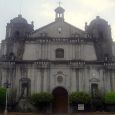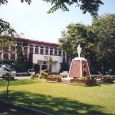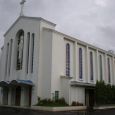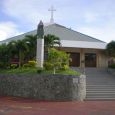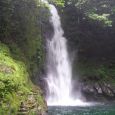Naga
Advertisement
By plane
Plane rides to Naga City take about forty-five (45) minutes. Airline companies that provide this service are Philippine Airlines, Air Philippines, Cebu Pacific and Zest Air. Planes land at the Naga Airport in Pili, Camarines Sur, so you will have to take a fifteen (15) minute car ride to get to Naga City.
By bus
Bus rides to Naga City from Manila take about eight (8) hours. The bus terminal for Bicol-bound buses is located At the Araneta Center in Cubao.
By car
Naga is 445 km by road from Manila.
Advertisement
Naga Cathedral
The Naga Metropolitan Cathedral (also known as the Metropolitan Cathedral of Saint John the Evangelist and informally as Naga Cathedral) is a prominent Latin Rite Roman Catholic cathedral located in Naga City, Camarines Sur was erected of Padia-an when the Diocese of Nueva Caceres was created by a Papal Bull of August 14, 1595. The current rector is Rev. Msgr. Noe Badiola, PC, appointed in 2011.The cathedral was destroyed by fire in 1768. The construction of present cathedral in spanish-romanesque style began by Bishop Bernardo dela Concepcion, O.F.M. in 1808. Finished and blessed by Mons. Tomas Ladron de Guevara in 1843. It was damaged by typhoon in October 1856, restored by the very Rev. Fray Francisco Gainza, O.P. in 1862-1879. Damaged by earthquake in 1887, repaired by Obras Publicas under the direction of Bishop Arsenio del Campo, O.S.A. and Engineer Ricardo Ayuso in 1890.
Penafrancia Basilica
The Penafrancia Basilica Minore is located on the outskirts of Naga City in the Bicol Region of the Philippines. The Image of Our Lady of Penafrancia is enshrined in her sanctuary at the Basilica Minore, Balatas Road Naga City. The current rector is Rev. Msgr. Rodel Cajot, PC, STD, appointed in 2011.The concept for the building came from Archbishop Pedro P. Santos in 1960. Construction began on April 18, 1976, but was delayed for a number of years due to finance problems and was not completed until September, 1981.
San Francisco Church
The church and parish of San Francisco antedated the erection of the Diocese of Caceres in 1595 by nearly two decades.Originally of bamboo and other light materials, the church was built in this present site on a north-south orientation. Its puerta mayor faced its parish, the pre-colonial pueblo of Naga which lay across the Naga River that at that time curved from its southerly course to a westerly direction before winding southward again alongside present-day Elias Angeles Street.By the middle of the 17th century, a church of bricks and lime had been constructed. Nearly two centuries later, San Francisco lost a portion of its parish when the river, straightened to its present course to mitigate flooding in Nueva Caceres, established the new boundary between native Naga and the Ciudad de Espanoles. The two were connected about a decade afterwards by the new Puente de Naga, but the new boundary later precipitated an ecclesiastical controversy that contributed to the death of Fr. Gabril Prieto and Fr. Severino Diaz.
Puente de Naga
Before Alcalde Mayor Manuel Esquivel undertook his reclamation project, the area bisected by the Rio Naga east of Calle Real was part of the Pueblo of Naga. At that time Naga was accessed from the Ciudad de Nueva Caceres by a bridge of wooden slabs at the river’s original bend south of the San Francisco Church. This bridge led to a road that is now approximately Balintawak Street and ran in a north to southwest direction to the Pueblo de Tabuco. Perpendicular to the road in Naga was the Camino Real going to Pili.
July - September
Information not available
Advertisement

